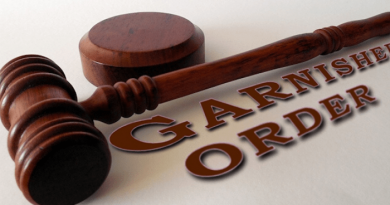A B2B Marketer’s Guide to Omni-Channel Marketing
Omni-Channel Marketing has mainly been thought of as a B2C practice, especially in retail where budgets are large and campaigns often look to saturate messaging across all media channels. However, there is a real and growing need today for B2B marketers to chart their own Omni-channel strategies.
What Is Omni-Channel Marketing?
Omni-channel marketing is the evolution of Cross-channel and Multi-channel marketing where the customer experience has become front and center. Omni-channel marketing is a 360 degree, next-level understanding of your customer’s needs that delivers experiences where your customers are. It’s about building the same tight, coordinated and convenient purchase experiences for your customers’ professional purchases that they are accustomed to in their personal shopping experiences.
Multi-channel and Cross-channel marketing typically focused on getting your messaging out across as many platforms as possible. It was about achieving a level of saturation to ensure your brand message reaches potential customers, but it often lacked a seamless experience. Omni-channel seeks to tailor those messages to the visitor making sure you’re reaching them where they are with a message that aligns to their place in the buyer’s journey.
Crafting a Strategy
Know your Customers
Honing your customer personas and buyer journeys is a critical step in crafting your Omni-channel strategy. Put yourself in your customers’ shoes, looking at how and where information is consumed.Consider how competitors in your segment are reaching them in these places. Know what the customer’s expectations are at all stages and identify ways to meet those expectations.
Get your data together
Take time to tighten up the data you have on your customers and identify problem areas or gaps. Your data will need to be clean, complete and standardized. If SMS is going to be a key piece of your strategy, make sure it’s formatted and compatible with your texting platform. Do you know which numbers are cell phones and which are office landlines? Also, define where you may be missing important information, and build touchpoints into your plan to fill in those gaps over time.
Align with Sales
Successful Omni-channel marketing requires a tighter partnership between marketing and sales. Marketing will be collecting more data about customers and will understand in greater detail where they are in the buying process. Sales needs to have this information at their fingertips. They need insight into the customer’s recent interactions with your marketing efforts to spark productive conversations. This also ensures a fluid progression of the customer’s journey.
Review Your Tech Stack
Some components of an Omni-channel strategy will be obvious. Email, mobile apps, SMS, Retargeting … these all will play a role in your Omni-channel approach, but the ability to orchestrate experience across platforms will be crucial.
Orchestration can be achieved through a hub-and-spoke approach with a central data repository that feeds your marketing platforms. In-platform apps can also provide the data connections to enable cross-platform orchestration. Your final solution will likely include a mix of both.
Measure, Refine and Iterate
The main driver for B2B Omni-channel marketing is ROI. Expanding your efforts into different media will likely require additional spends on tight budgets, and you’ll want to accurately measure the results. Knowing the KPIs for each stage of your buyers’ journey will be critical to your decision-making, but what might those KPIs look like?
At the Awareness stage, your focus will tend to be on traffic to your website. You can also look to social media metrics such as shares, likes and mentions to gauge upticks in awareness.
Engagement follows closely and is where you’ll start to look at duration of visits along with email metrics like opens and clicks to see lift. Content measurements, like white paper downloads, can also give you a view into your marketing efforts at this stage.
When customers reach the Demo stage, apps are often a major component of the experience. Work with your product development team to learn how to measure engagement with software trail versions, mobile apps or other pre-purchased digital products.
At the Purchase stage, channel attribution is often the main KPI. Think about whether you want a single attribution model that associates the revenue with the dominant channel in the process, or if you want to set up a multi-point attribution model that can break revenue across various channels according to the role each plays.
Retention, by its nature, is a long-term play, and three KPIs that tend to stand out: Renewal Rate, Renewal Amount and Customer Lifetime Value. These will help give you insight into post-purchase behaviors and help you communicate with your customers to increase all three.
Making the leap to an Omni-channel marketing model requires the right set of tools and the expertise to make it sing. However, it doesn’t necessarily require a completely new suite of pricey technologies. Having a strategic partner can help you make the most of the technologies you have and build the capabilities you need to fill in the gap. If you’re wondering where to get started, or just need an extra hand to reach the finish line, let us know. Relationship One can help guide you along the way no matter where you are in the Omni-channel journey.
Thank you for subscribing!




